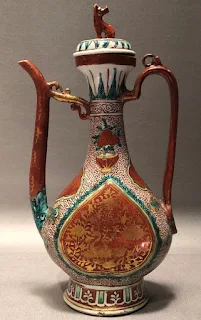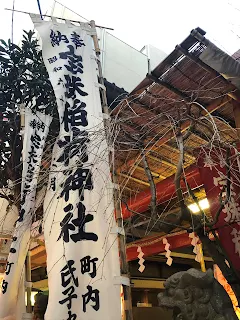They are the four heavenly kings carved from wood in the 14th century during the Kamakura period (1185-1333) in Japan. These kings are said to watch over the four cardinal directions.
 |
| Zochoten (Virūḍhaka) Guardian of the south 増長天 南を守護 |
 |
| Jikokuten (Dhataraṭṭha) Guardian of the east 持国天 東を守護 |
 |
| Komokuten (Virūpākṣa) Guardian of the west 広目天 西を守護 |
 |
| Tamonten (Vaiśravaṇa) Guardian of the north 多聞天 北の守護 |
They look so strong, masculine, and more human compared to Buddha statues, who generally don't show any emotions.... But I can show you a more human god and a devil.
 |
| Poor little devil dragged by Vajrapani 執金剛神に引きずられる鬼 |
 |
| Statue of Vajrapani by Kyuichi Takenouchi, wood 執金剛神立像、竹内久一 |
The above photos are of Vajrapani, the protector and guide of Buddha, dragging a poor little "oni" or Buddhist devil. My husband, when looking at them, murmured, "It's like you and me..." and hurried away to see the next sculpture without responding to my question, "Which is which???"......
(If you wish to post your comment but don't have a Google account, select "anonymous" from the drop down menu titled "comment as"!)
上から増長天、持国天、広目天、多聞天です。それぞれ南方、東方、西方、北方を護っているそうです。真面目な仏様(仏像)よりこういう「人間くさい」像の方が好きです。。。
でももっと人間くさい神様がいらっしゃいます。竹内久一作「執金剛神立像」です。鬼を引きずる姿に、見た瞬間噴き出してしまいました。主人曰く「まるで僕たちのようだね」。どっちがどっちかはご想像にお任せします。。。
(Google アカウントを持ってない方がコメントする場合は、「Google アカウント」をクリックし、「匿名」か「名前/URL」を選択してからご記入ください!)













































